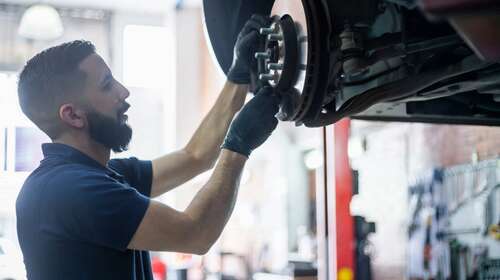
Disc brakes take their name from the large rotor found in disc brake systems. This brake rotor, along with special brake pads and calipers, is used to create the friction that stops your car. When you press the brake pedal, your vehicle’s hydraulic brake fluid becomes pressurized. That pressurized fluid then travels throughout a network of hoses and fluid lines to reach the car’s brake calipers. The calipers are built using pistons and house brake pads made of ceramic or metal. When the pressurized fluid reaches the caliper, it causes the pistons to expand and pushes the brake pads into the rotor, generating the friction used to stop your car. That friction adds up to steadily degrading performance — replacing worn-out brake pads and picking the right kind of hydraulic fluid are both vital to the long-term wellbeing of your car.
Disc brake systems are more complex and provide more braking power than drum brakes. They began to see widespread use in the 1970s as automakers endeavored to increase stopping power and vehicle safety. Today, many vehicles either use disc brakes on all four wheels or put discs at the front and drum brakes at the rear. Most of a car’s braking power comes from the front end, allowing front disc brakes to handle the bulk of the braking duties while the rear drums pull backup duty. Rear brakes also function as the emergency and parking brake.

